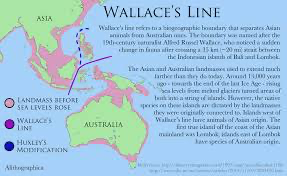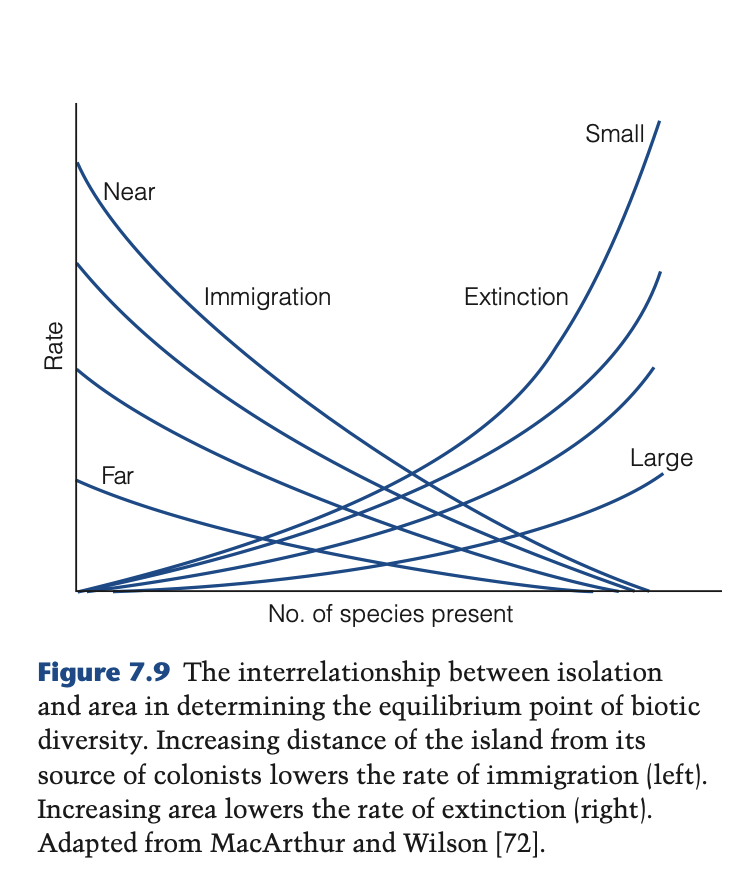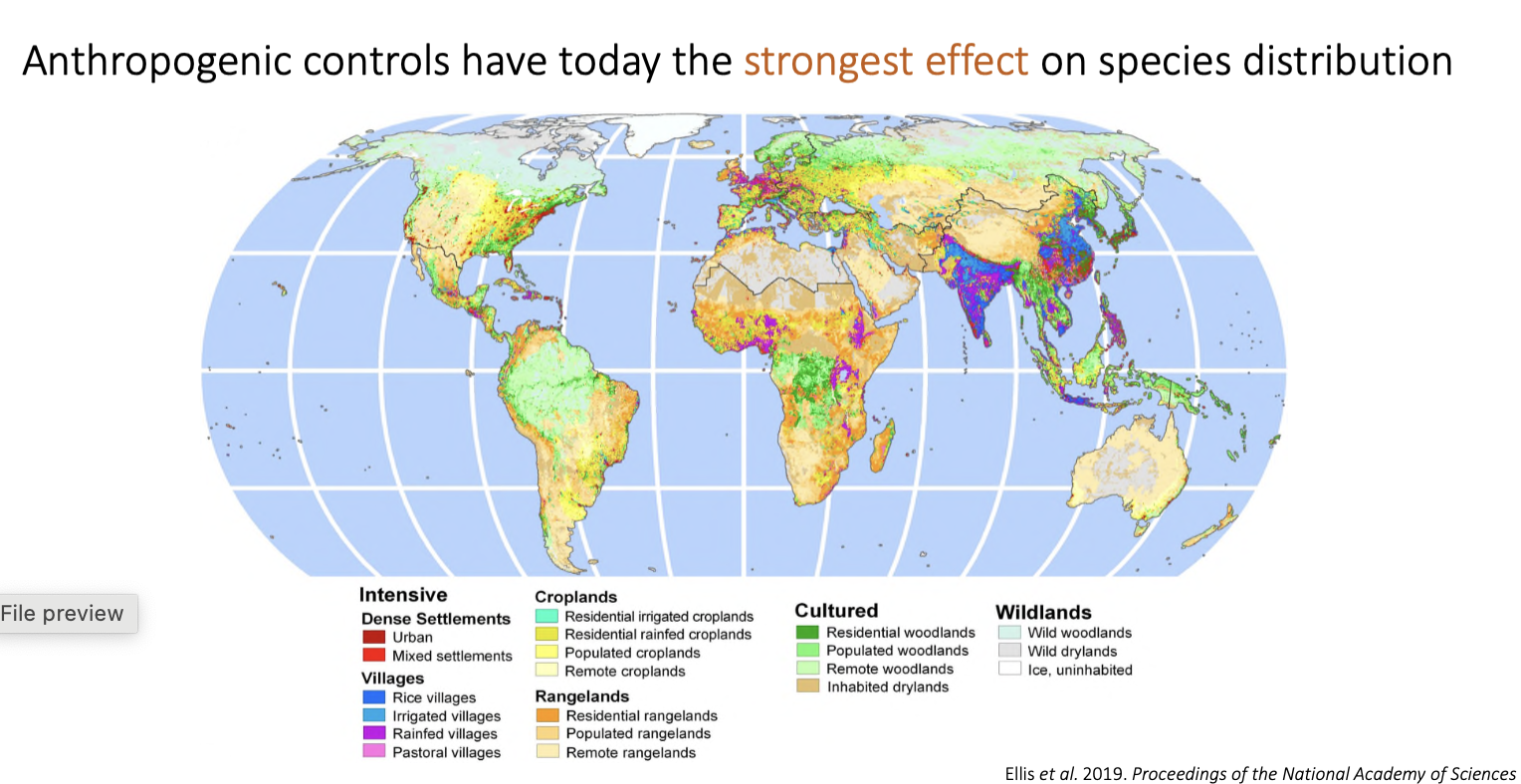Biogeography and Species Distribution
1/33
Earn XP
Description and Tags
Flashcards on biogeography and species distribution.
Name | Mastery | Learn | Test | Matching | Spaced |
|---|
No study sessions yet.
34 Terms
Biogeography
the study of geographical distribution of organisms
Lomolino et al., 2017
Environmental Controls on Species Distribution
climate control major driver of distribution

Geographic Controls on Species Distribution
Vicariance = seperation of a pop by a physical barrier leading to similar species
Dispersal = movement of species from one location to another, resulting in different evolutionary pathways.
Connectivity of habitats can change - can vary over time
Barriers affecting species individually
Abandoned patches may re-connect - become homegnised again
Lomolino et al., 2017
Biogeographic regions
distinct areas with unique plant and animal life shaped by ecological and historical factors
Lomolino et al., 2017
Importance of islands
physical attributes make them an ideal place of research
key figures have contributed to biogeography using islands
Islands as model systems + provide research opportunities
many of them
find islands in all climate zones
discrete - have edges - where water starts
Warren et al., 2015
Types of islands
Continental e.g. British Isles
Oceanic e.g. Galápagos Islands
Barrier
Tidal
Coral
Artificial
Lomolino et al., 2017
Evolutionary filter and species selection on islands
Group of species arriver at an island
community assemblage
evolutionary filter - make species go extinct
Whittaker et al., 2013
Island Syndromes
Unique evolutionary traits and vulnerabilities that species develop upon reaching isolated islands.
Lomolino et al., 2017
Importance of islands - physical factors - Isolation (Sympatric Isolation) - new species from the same ancestor
once apart of neighbouring continent - likely to have flora and fauna from mainland
speciation occurs in isolation
Santos et al., 2016
Island analogues
Lakes - can be defined spatially
Lakes used as models to study island biogeography
most tests here focus on relationship between species richness and lake surface area / isolation
Hortal et al., 2014
Island size
positive relationship between the area of a habitat and the number of species found in the area
large islands have more species
small spaces can only support a small number of species
rising sea levels during warm phases = fragmented the region into large islands and archipelagos
leads to speciation through isolation
Whittaker wt al., 2007
Distance from the mainland
Rising sea levels - make islands further away from mainland
oceans barriers to distribution if land animals (Allopatric isolation) - new species
island communities of not always have lower diversity than mainland - Santos et al., 2016
near islands will have higher immigration rates than far islands - Warren et al., 2015
MacArthur and Wilson - Island species area relationship steeper with increasing geographic isolation
Small island effect - certain species can not occur on an island below a certain size
Ecoregions
identified by analysing patterns and composition of biotic and abiotic components
E.g. geology, soil, land use etc
Lomolino et al., 2017
Darwin and Islands
Mocking bird species on 3 islands in the Pacific - different from each other
Fossils found in South America - sloth and armadillo - contradicted idea that species were fixed
Galapagos islands - size of finches beak varies
biogeographical processes from one study
Immigration —> colonisation —> adaptive radiation
Cox and Moore, 2019
Colonisation
plant or animal establishing itself in an area
Cox and Moore, 2019
Adaptive radiation
process in which organisms diversify from ancestral species into new forms
Cox and Moore, 2019
Wallace
realised that closely related species were found close together geographically
distance from mainland will affect diversity of biota
Santos et al., 2015
Wallace Line
shows how species remain separate
can not travel between islands due to sea level rise
Santos et al., 2015

Natural selection
organisms with traits better suited to environment - more likely to survive - pass on traits + reproduce
by Darwin and Wallace
Cox and Moore, 2019
MacArthur and Wilson
theory of island biogeography = number of species on an island is the result of dynamic equilibrium between species becoming extinct
biota affected by degree of isolation
rate of immigration balanced by rate of extinction
may take time to establish equilibrium
theory does not always work
Warren et al., 2015

SLOSS debate (Single Large or Several Small) - link to Island biogeography theory
optimal strategy for conserving biodiversity in fragmented habitats
will a single large reserve conserve more or serval small ones
catastrophe - everything will go - better to have smaller areas
Cox and Moore, 2019
Edge effect - ink to Island biogeography theory
more edge - ratio is higher when you have smaller islands rather than one big one
Cox and Moore, 2019
Ecological factors - Succession and disturbance
large disturbances can lead to areas being exposed and reshaped
Spiller et al., 1998
e.. Krakatoa volcano in 1883
biological invasions can change the local environment
Ecological factors - Evolution and adaptation
evolution change in response to conditions
process takes long - unlikely to occur anywhere but islands - provide opportunity for species to live long enough for adaptation
Evolution key role in community assembly
Thorpe, 2005
Conservation theory
Habitat fragmentation = reduction in the area of the original habitat and spatial configuration of that remains
assumptions - fragments are similar to oceanic islands
Haila, 2002
Paleogeography
Past geographic conditions have shaped current biogeographic regions.
Processes that affect differentiation at palaeographic scales
plate tectonics
climate history
evolutionary history
Willis and McElwain, 2014
Case study for Palaeography
Gibraltar straight closing connected Europe and Africa 5 to 6 mill years ago
species competition if North Africa and Europe
Unable to cross
Willis and McElwain, 2014
Tobler’s Law
everything is related to everything - but near things are more related than distant
exception - environment shows string contrasts so near places differ greatly
Near things may not be more similar -
Anisotropic Long-Distant Dispersal Hypothesis - dispersal of animals affected by directional factors like water and wind
E.g. stronger correlation of floristic similarities with wind connectivity than proximity
Lomolino et al., 2017
Anthropogenic Controls on Species Distribution
Human activities influence species distributions.

Rufugia - climate change
earth got cooler - water locked up in ice - drier
impact on poles greater
tropical forest = drier - retract in refugia
glacial maxima - tropical forest shrank + fragmented
speciation occurred
end of glacial period - warmer
habitat islands grew again
more speciation
evidence for this : areas in the Amazon where there are highly biodiverse in certain types of species
e.g. butterflies in all patches
Cox and Moore, 2019
Dispersal
The movement of a species from one area of land to another, particularly relevant in island biogeography.
Lomolino et al., 2017
Invasive Species
Species that colonize areas they were previously unable to inhabit due to geographic barriers.
Lomolino et al., 2017
Zoogeographic Regions
Regions defined based on the distribution of vertebrate families and genera.
Lomolino et al., 2017